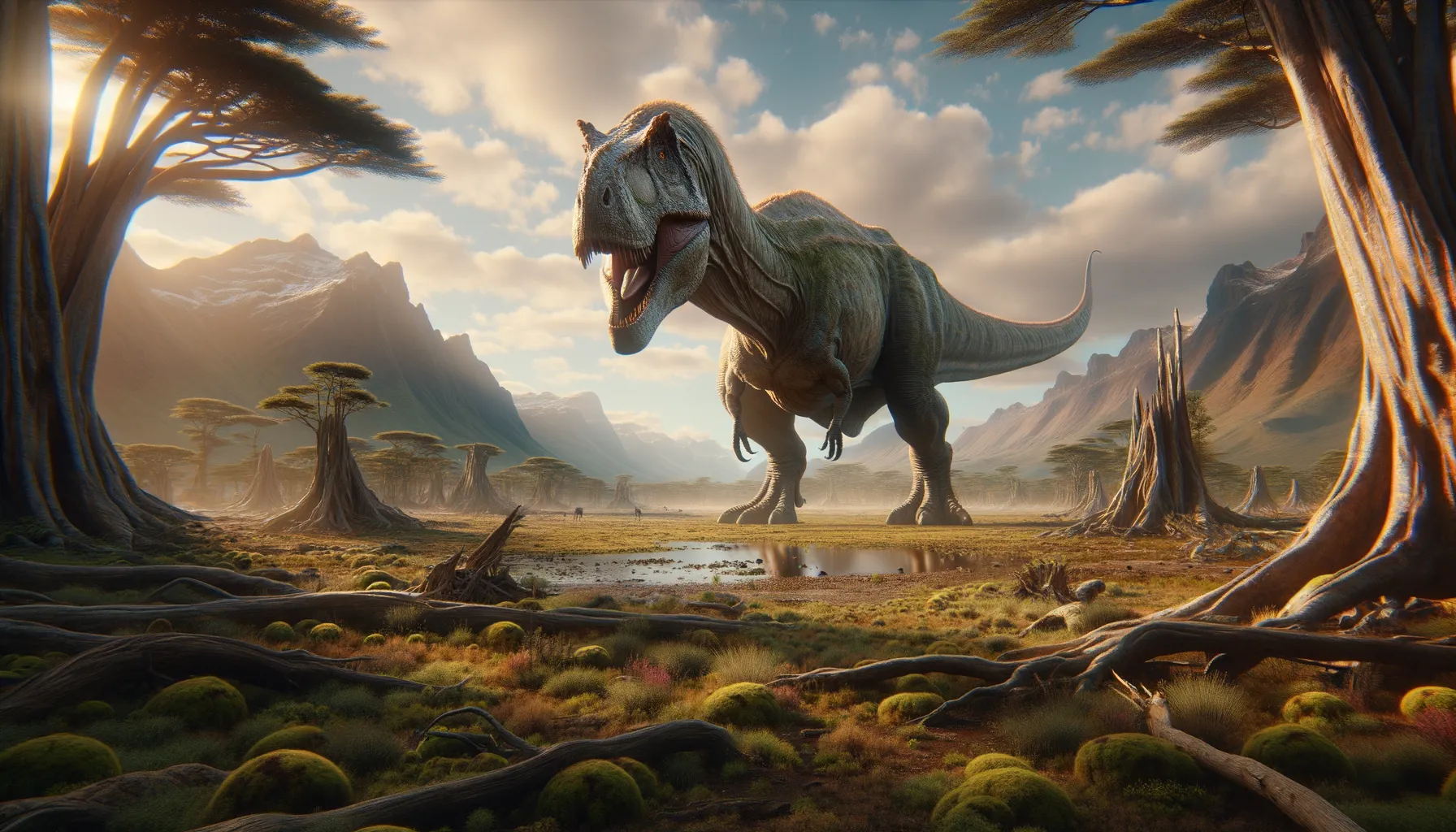
Rukwatitan
A giant wanderer of ancient Africa.
Period
Cretaceous
Length
Nearly 30 meters long.
Height
Around 10 meters tall.
Weight
Approximately 40 tons.
Rukwatitan was a massive sauropod dinosaur that roamed the Earth during the Late Cretaceous period. Known for its incredible size, it was a plant-eating giant that likely moved in herds across what is now Africa. Discovered relatively recently, it has provided researchers with valuable insights into the diversity of titanosaurian sauropods that existed in Gondwana, the ancient supercontinent.
Diet
Rukwatitan was a herbivore, primarily feeding on leaves and branches from tall trees. Its long neck allowed it to reach vegetation that was out of reach for many other herbivores. This feeding strategy helped it sustain its large size and energy requirements.
Hunting
As a herbivore, Rukwatitan did not hunt but foraged for plant material. It likely used its long neck to browse treetops and snag foliage. Its large size could deter possible predators while it foraged.
Environmental challenges
The shifting climates and changing landscapes posed significant challenges to Rukwatitan. Periods of drought could make food scarce, challenging the survival of these large animals. Additionally, volcanic activity might have periodically altered their habitats. They also had to evade large predators that roamed the Cretaceous landscape.
Speed
Slow due to its massive size and weight.
Lifespan
Estimated around 70-80 years in the wild.
First discovery
Discovered in Tanzania in 2014.
Fun Facts
- Rukwatitan was a giant dinosaur that lived around 100 million years ago during the Cretaceous period.
- This dinosaur was named after the Rukwa Rift Basin in Tanzania, where its fossils were discovered in 2002.
- Rukwatitan belonged to a group known as titanosaurs, which were known for their massive size and long necks.
- Despite its impressive size, Rukwatitan was a herbivore, feeding on plants and foliage it could reach.
- The discovery of Rukwatitan added valuable information to our understanding of dinosaur diversity in Africa during the Cretaceous.
- Unlike some other dinosaurs, Rukwatitan's bones were relatively light, which helped it support its massive frame.
- Rukwatitan's fossils helped scientists learn more about the continental connections between Africa and South America during the dinosaur era.
Growth and Development
Rukwatitan hatchlings were significantly smaller than adults, requiring years of growth to reach full size. Their rapid growth in early years was crucial for survival against predators. Fossil evidence suggests that young individuals would stay with the herd for protection while they matured.
Habitat
Rukwatitan lived in what is now the Tanzanian part of Gondwana, where there were lush forests and open plains. This region provided ample vegetation for sustenance. Water sources such as rivers and lakes would have been essential for survival, particularly in drier periods.
Interaction with other species
Rukwatitan likely coexisted with other herbivorous dinosaurs, sharing food resources with them. Possible predator encounters would have included large theropods. They might have also benefitted from smaller animals that fed on insects stirred up by their movement through vegetation.
Natural lifespan
Rukwatitan could live up to 70-80 years if conditions were favorable.
Reproduction
Rukwatitan likely laid eggs in nests, possibly in large communal nesting sites. Parental care might have been limited, with eggs left to develop on their own. The hatchlings would have joined herds quickly to gain the protection of numbers.
Social behaviour
Rukwatitan is thought to have traveled in herds, which provided protection and facilitated social interactions. Herd behavior would have helped them locate food and navigate through various terrains. These groups might have included mixed ages, offering collective defense against predators.
Fossil locations
Rukwatitan fossils have been primarily found in the Rukwa Rift Basin in southwestern Tanzania. This discovery area is known for an array of vertebrate fossils from the Cretaceous period. The site has provided crucial data for understanding the diversity and distribution of African dinosaurs.
